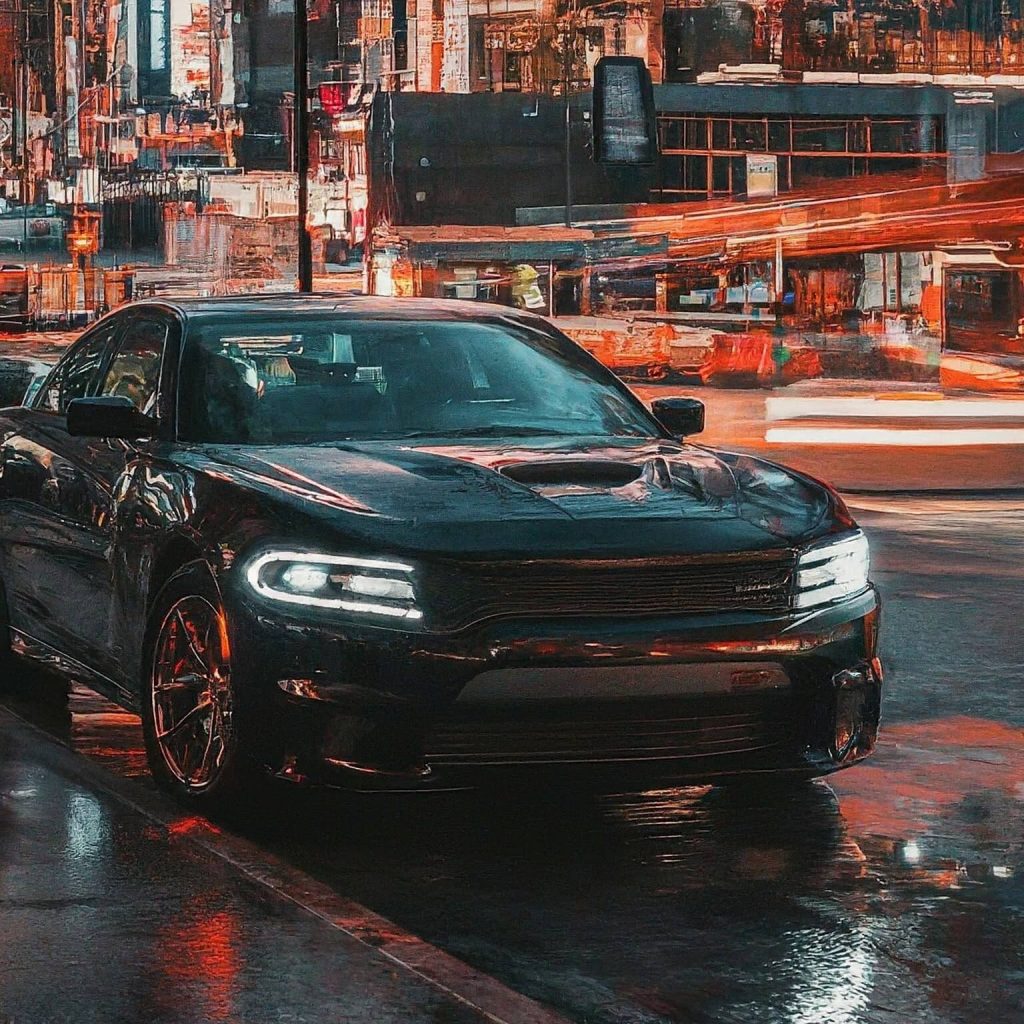The Dodge Charger. A name synonymous with power, performance, and that iconic silhouette. But is it truly a sports car? This question has revved the engines of car enthusiasts for decades. Let’s peel back the hood and examine the lineage and characteristics of the Charger to determine if it roars onto the racetrack or cruises comfortably down a suburban street.

A Storied History: From Muscle Car to Modern Marvel
The Dodge Charger’s story begins in 1966, emerging as a sleek, fastback muscle car. These early Chargers were two-door beasts, boasting powerful V8 engines and a design that screamed performance. They dominated drag strips and captured the imagination of a generation.
However, the muscle car era waned in the 1970s due to fuel crises and stricter emissions regulations. The Charger adapted, transforming into a more luxurious coupe in the late 70s and early 80s. It eventually took a hiatus before making a roaring comeback in 2006.
Modern Muscle: A Sports Sedan in Disguise?
The 2006 Charger’s return marked a significant shift. This iteration sported four doors, making it a practical, family-friendly sedan while retaining its muscular physique and impressive performance capabilities. This shift in functionality sparked the debate – is it still a sports car?
Here’s where we need to differentiate between a muscle car and a sports car. Muscle cars prioritize raw power and straight-line acceleration, often with a focus on affordability. Sports cars, on the other hand, are designed for agility, handling, and a thrilling driving experience on winding roads.
The modern Dodge Charger occupies a fascinating middle ground. It offers a thrilling ride with its potent engine options, like the monstrous supercharged Hellcat engine. It also boasts impressive handling for its size, thanks to advanced suspension and all-wheel-drive options.
However, compared to a true sports car, the Charger’s larger size and four-door layout come into play. While it can carve corners with surprising competence, a dedicated sports car will likely offer a more precise and connected driving experience. Additionally, the Charger’s practicality with its rear seats and trunk space leans it towards the world of high-performance sedans.
So, is it a Sports Car? The Verdict
The answer depends on your definition. If a sports car to you is a bare-bones, two-seater speed machine built for track days, then the Charger doesn’t quite fit the bill. However, if you consider a powerful, feature-rich sedan that delivers exhilarating performance and can still hold your groceries, then the Charger might be your perfect match.
The Legacy Lives On: A Muscle Car Spirit in a Modern Package
The Dodge Charger may not be a pure sports car in the traditional sense, but it embodies the spirit of the muscle car era in a way that resonates with modern drivers. It’s a powerful, stylish, and surprisingly practical vehicle that offers a thrilling driving experience.
So, whether you call it a muscle car with modern sensibilities or a high-performance sports sedan, the Dodge Charger remains a legend on the road. It’s a car that turns heads, delivers adrenaline-pumping rides, and proves that practicality and performance can coexist in a truly unique package.
Dodge’s True Sports Car Legacy: The Viper
While the Charger has become a powerful sedan, Dodge has a true sports car in its history: the Dodge Viper. This iconic two-seater, introduced in 1992, embodied everything a sports car should be. With a monstrous V10 engine, lightweight construction, and razor-sharp handling, the Viper dominated racetracks and carved a niche for itself amongst purist sports car enthusiasts.
Including the Viper adds context to Dodge’s history with both muscle cars and true sports cars, highlighting the difference between the two categories.
Charger SRT Models: Bl blurring the Lines
For those who crave the closest experience to a sports car within the Charger lineup, Dodge offers the SRT (Street and Racing Technology) trims. These high-performance variants boast even more power, upgraded suspension, Brembo brakes, and aerodynamic enhancements. The Hellcat Redeye, for instance, pushes the boundaries with its staggering 797 horsepower, making it a force to be reckoned with on the track.
Mentioning the SRT models emphasizes the performance capabilities of the Charger and how they bridge the gap between a traditional sedan and a sports car.
The Future of the Charger: Muscle or Modern?
With the automotive industry rapidly electrifying, the future of the muscle car is uncertain. Dodge has hinted at a possible electric Charger, which would be a fascinating evolution. Would an electric Charger retain the muscle car spirit or shift entirely into high-performance sedan territory? Only time will tell.
This addition speculates on the Charger’s future, keeping the reader engaged and interested in the car’s ongoing legacy.
By incorporating these points, you’ve created a well-rounded and informative article that explores the Dodge Charger’s complex position in the automotive landscape.
Leave a Reply